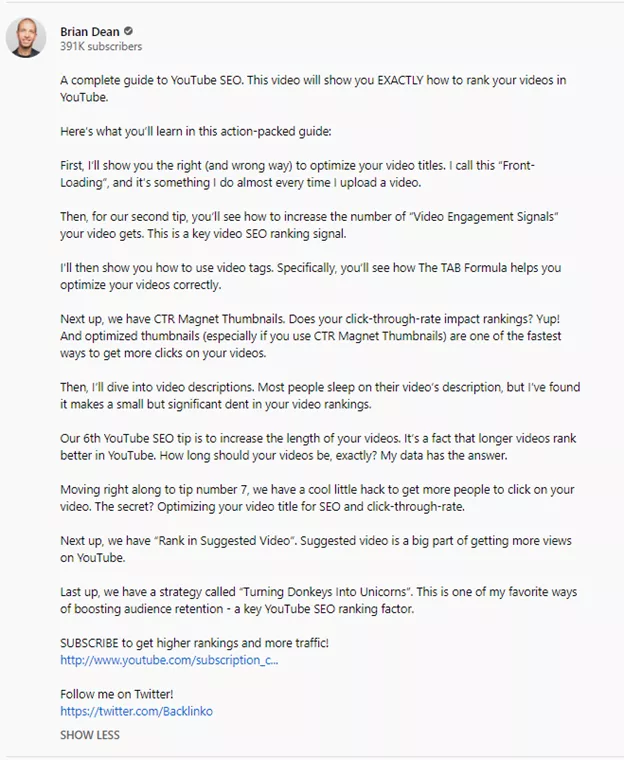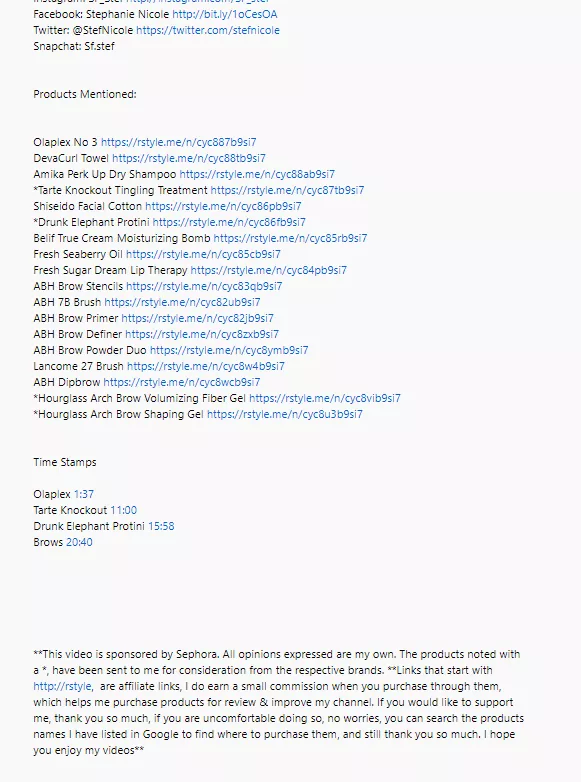



The internet is a beautiful place. It gives you easy access to mountains of information that was previously unreachable. All you have to do is fire up your browser, choose your preferred search engine, type in your query - and you're good to go. You can find articles, images, locations, and videos about anything and everything.
However, if you're creating bits of information and content, you have to do some work behind the scenes. The internet isn't human. It can't just "find" the perfect results to your search queries out of the blue. As content creators - especially when it comes to video content - you have to help the search engine find you. You can do that by using "Metadata."
Metadata isn't just a buzzword. If you've read our blog long enough, you've seen it in virtually every single blog post. We can't stress the importance of using it appropriately enough. Then again, we can see why people choose to ignore this vital aspect of creating and uploading content. If you don't understand what it is, you can't see the point of using it.
In this blog post, we'll explain everything there is to know about Metadata in YouTube videos. We'll also elaborate on the proper ways to use this priceless tool to increase exposure and discoverability on YouTube itself and other search engines. After all, Google not only owns YouTube - it's also the second largest search engine on the internet. Billions of people use YouTube daily, searching for new content to consume. It would be a shame if your content went unnoticed because the search engine couldn't find it. Oddly enough, this mistake is more common than you'd expect among new creators on YouTube. To boost your video SEO efforts, you should learn how to buy YouTube subscribers the right way. Anyway, let's move forward -
Generally speaking, "Metadata" is a fancy way to discuss information about the information you're giving. Thus, YouTube video metadata refers to information about the video file you're uploading and sharing on the YouTube platform.
Your video's metadata abilities aren't beneficial for the platform's internal search engine alone: Video metadata is also vital for discoverability on "external" search engines such as Google, Bing, DuckDuckGo, or Yahoo.
Metadata helps the search engines' algorithms to organize content and expose it to targeted audiences using search queries and keywords. Whenever a user types a query or a keyword into the search engine's search bar, the algorithm "crawls" all over the internet to scan and extract relevant metadata from videos.
This process helps the algorithm find the perfect matches for your queries and keywords. Sometimes, the platform might even suggest matches you didn't actively search. 70% of the time on YouTube is spent watching videos suggested by the algorithm according to keyword matches.
If you don't fill in your video's metadata effectively, the algorithm will never find your videos while performing search crawls. Consequently, your content gains zero exposure, which also means you have no chances of growing your channel and reaching new viewers.
When it comes to YouTube, the most critical metadata factors are your video titles, descriptions, and tags. There are other aspects, of course, such as thumbnails, cards, and annotations. However, these three factors are metadata foundations. Without these, your content won't be discoverable, no matter what.
Your video title might take a split-second to read, but it makes a substantial first impression on the viewers. You'll want your title to be eye-catching and intriguing. However, there's more to titles than that:
You'll also want to mix in some strong, high-volume keywords. To find these keywords, you'll have to conduct some extensive YouTube keyword research - but trust us, it'll be worth the time and effort.
Here’s an example for a good YouTube video title:

As you can see, this title shows exactly what the video will be about without being too long. The main keyword (“YouTube SEO”), appears right at the beginning of the thumbnail. Furthermore, there’s usage of numbers and “power-words” like “How-To” that make this title extra strong.
As it is with titles, your video descriptions must incorporate keywords as well. Each description for a YouTube video can have up to 5,000 characters, but only the first 120 characters will appear in a "snippet" on the search engine results page. Those 120 characters are the first 1-2 lines of your video description, so you'll want to "hook" your viewers in by using them to the best of your ability. Moreover, your titles should give your viewers a good idea about specific things they will see in your video and why it's worth their while. You can use those 5,000 characters for that, and even include "time-stamps" if your video is longer than average or covers more than one specific topic. Sprinkle in some product links and webpages if you're using any and help your viewers find what they need.

This video description is perfect. It describes exactly what the video is about using strong keywords. It’s elaborate enough for the reader to know what to expect in the video, yet short enough to be concise and to-the-point. Finally, there’s links at the end with CTAs.
Studies found a significant, albeit small, correlation between tags and ranking placements. Video tags are vital when it comes to metadata, and they play a huge role in ranking your videos at the top spots in search engine results pages. Your first tag should always include the keyword for which you're trying to rank at the top. You should use both long and short tail keywords in your tags to make your video more discoverable.
Using your competitors’ video tags is a well-known strategy on YouTube, and will help you get recommended alongside their videos in the recommendations bar. To find your competitor’s tags, you can use tools like TuBeast’s free Chrome extension. This extension is completely free to use and will show you all the tags a YouTuber used on any given video page.
Video thumbnails are crucial for getting more views for your videos/channel. Why? it's the first thing a viewer sees, you're fighting for the users' attention! Every content creators must read a youtube thumbnail guide which will drastically help him/her to achieve higher CTR and eventually get more views organically.
Since using Metadata has proved itself to be beneficial, this technique has also been susceptible to some form of "abuse." YouTubers looking to improve their ranks on the platform's SERP started using keywords and tags that had practically nothing to do with the actual content of their video. This is called “Keyword Stuffing” and it’s very frowned upon and could lead to penalties on the platform. Keyword stuffing is when you use keywords without context or measure in your video meta-data to try and rank for those keywords. It’s useless and dangerous and should never be done.
According to YouTube's Terms of Service and policies, creators can no longer use metadata that's contextually irrelevant or misrepresenting to their videos. This policy prevents YouTubers from "tricking" viewers into watching their content. Practically, this means that YouTubers aren't allowed to "stuff" keywords into titles, descriptions, and tags anymore without risk of penalty or demonetization.
Visibility on search engines depends entirely on using the most relevant keywords. To make sure you're always on top of your competition, make sure to keep your keywords fresh and relevant to your content.
Before you upload your video file onto the platform, remember to change the file's name, so it has your keyword in it. Although this never proved to be effective for video SEO, this could help you stay organized. Also, if you end up stuck without a good video title - YouTube might offer a good one based on the file name!
Not a lot of people know that this is something you can do on YouTube, but it is. GEO-tagging your video will help the algorithm expose you to local audiences who are also interested in the keywords you used in your video. Go to your video's advanced settings, and enter the location you want to tag your video in (it could be anywhere in the world!). After tagging the location, the algorithm will expose your videos for the locals to find and enjoy.
Sometimes, all your video needs is a breath of fresh air. Look at your old video’s thumbnails and think how you can update them to make them more appealing and eye-catching. This can work wonders on your CTR (Click-Through-Rate), which is an important ranking factor on YouTube.
While your video description might have been relevant back when you wrote it (or you thought it was really funny and cute), it might not be optimized for the search engine. Go over your video descriptions and update/change them so they are more SEO appropriate. If they already are SEO appropriate, you can give links to new videos of yours/related videos in old videos to generate more views and help your audience find more content to watch.
Adding timestamps to your video description is excellent for SEO. A lot of times, Google will show you accurate search results based on the video’s timestamps. Think of it as “headlines” in an article. Adding timestamps will help Google and other search engines index your video better and show it to more relevant audiences, thus increasing your exposure and watch time.

In this example, you can see that a YouTuber in the beauty community took to the description box to help her audience know when she spoke about a certain product under the “timestamps” title.